Plantcestral Remedies for Perennial Ailments
This photo essay is a companion to an article on the documentation, conservation, and practice of ancestral ecological knowledge: Returning to the Land and Our Oral Plantcestral History.
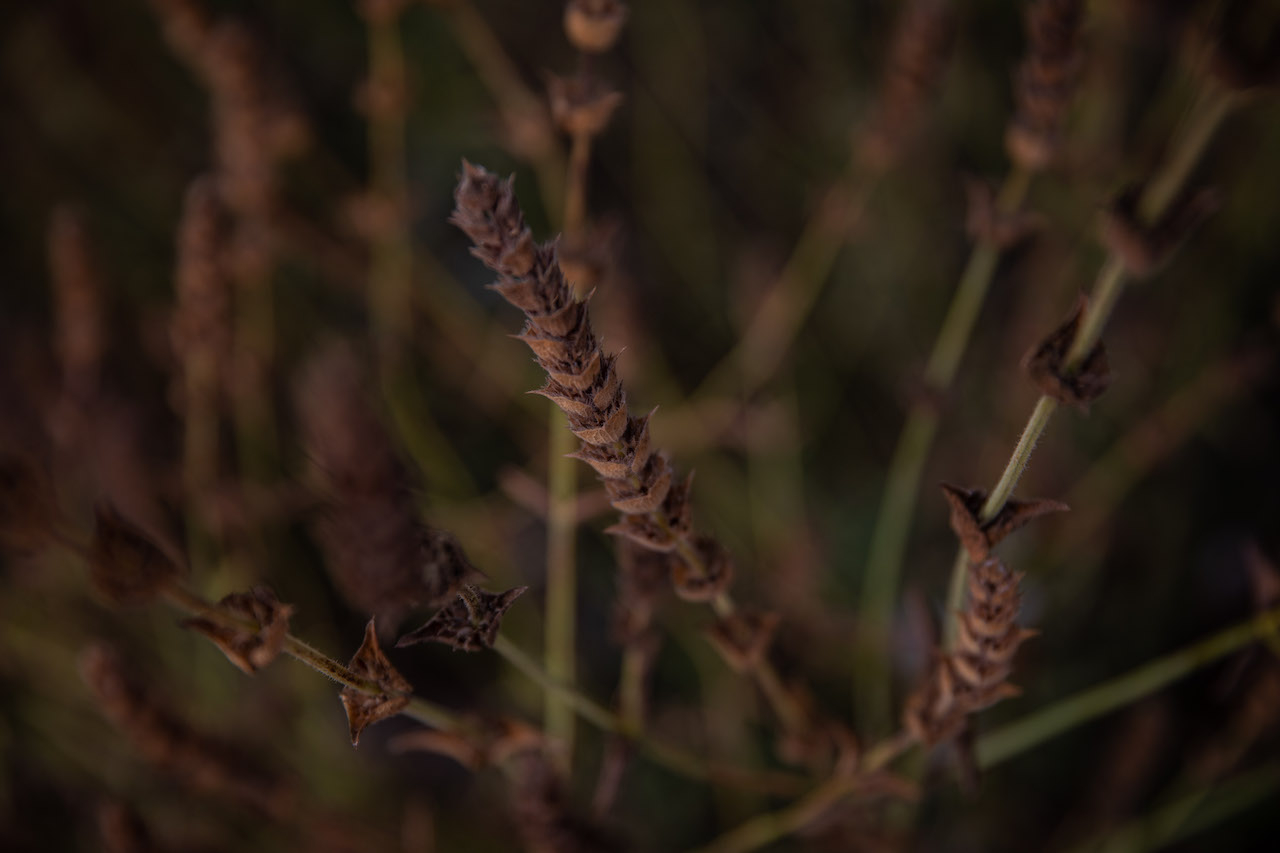
Mountain tea/ironwort | شاي الجبل
Mountain tea or ironwort is a powerful medicinal plant that helps with bronchial asthma, the common cold, gastrointestinal problems, and inflammation. It is also a good antioxidant. However, “it’s forgotten in our locality in Lebanon; hardly anyone ever uses it for medicine here,” says Boulos Saad, founder of the herbal collective Tariq el Nahl. Batloun, Lebanon. September 14, 2022. (Chris Trinh/The Public Source)
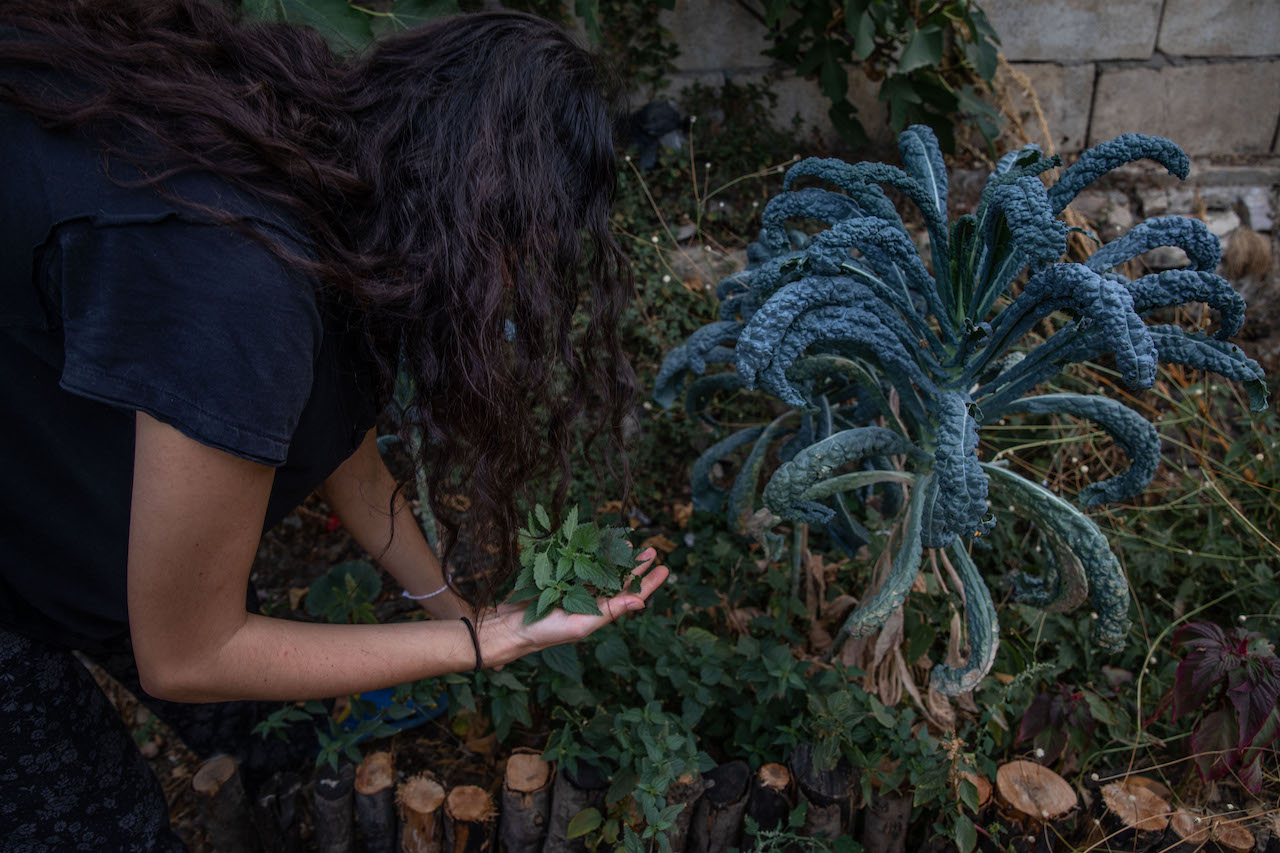
Stinging nettle | قراص
Next to a large bluish kale plant, forager Rianna Tassabehji holds a cluster of stinging nettles in her hand while she picks more, despite getting mildly stung. The leaves, she dries, powders, or grinds, incorporating them into her baked cookies or infusing them in her teas. Nettles can replace any leafy greens, in soups, with eggs or noodles. They can also be made into a tincture for an iron and vitamin boost. Forager Nayla Kahwaji explains that nettles are used for detoxing kidneys and that, unlike other detoxifying herbs, they nourish the body with vitamins and minerals without ridding it of the things it needs. Batloun, Lebanon. September 14, 2022. (Chris Trinh/The Public Source)
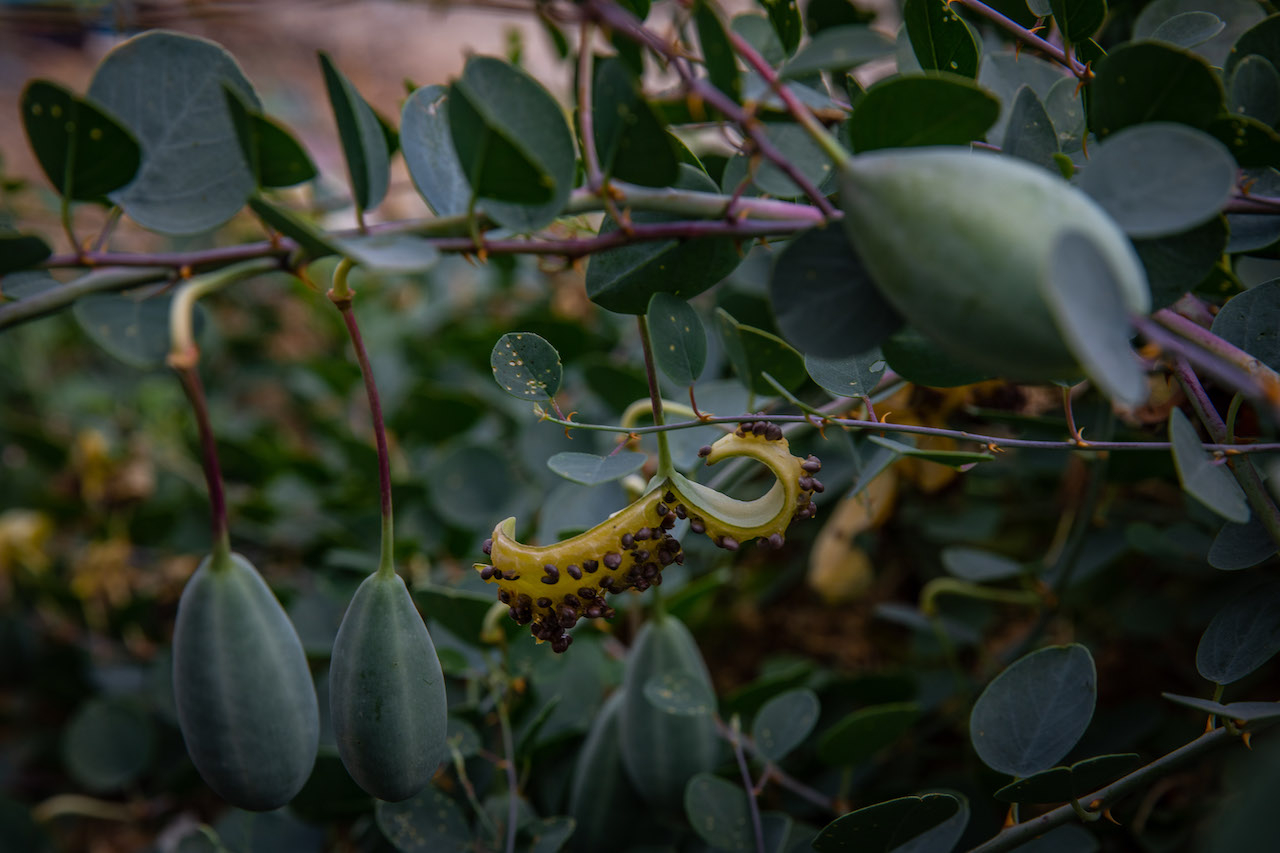
Caper | قبار
Caper bushes are perennial plants — they regrow every year and do not have woody stems. They bear rounded leaves and pink-white flowers in the summer, but are best known for their buds, which are harvested and pickled with vinegar, salt, and spices. Souhaila Massoud Ghanem recommends soaking the buds in water for three days until they become the size of a walnut; the water should be changed daily before pickling it with the salt and vinegar brine. Batloun, Lebanon. September 14, 2022. (Chris Trinh/The Public Source)
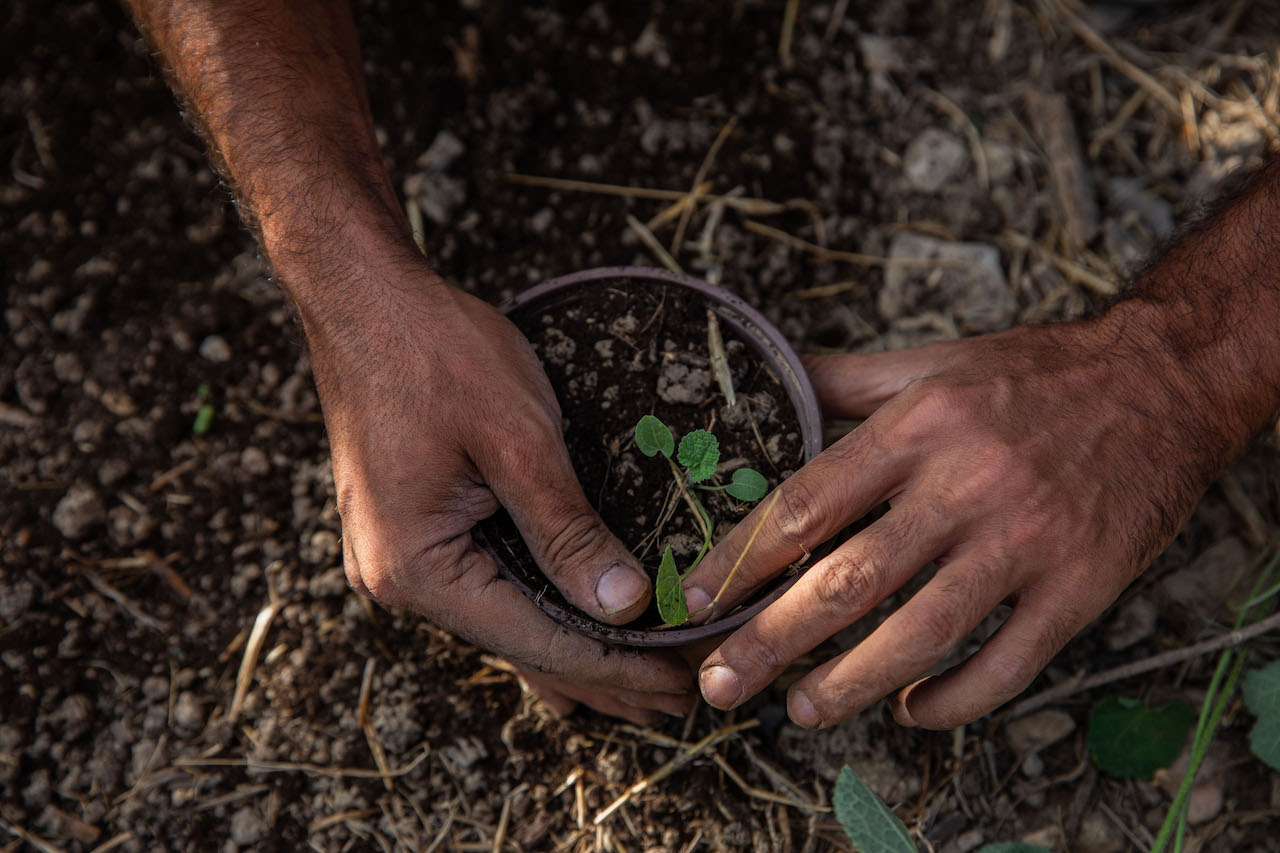
Mallow | خبّيزة
Botanist Hicham El Zein, member of the Tariq El Nahl herbal collective, replants khubbeizeh (mallow) after weeding it from another plot. Khubbeizeh is a common ingredient in many dishes, from fatayer to salads. It can also be cooked as you would mloukhiyeh (another type of mallow), with coriander, garlic, lemon, chicken and/or meat, and rice. In the Southern village of Qtaleh, Jezzine, khubbeizeh is sauteed with hummaydah, garlic, lemon, chili, and olive oil; the mixture is then stuffed in meatless kibbeh balls made with flour and burghul. Khubbeizeh is soothing to the digestive and respiratory systems, calms inflammation, and combats shoe odors, according to herbalist Layla Feghali. Batloun, Lebanon. September 14, 2022. (Chris Trinh/The Public Source)
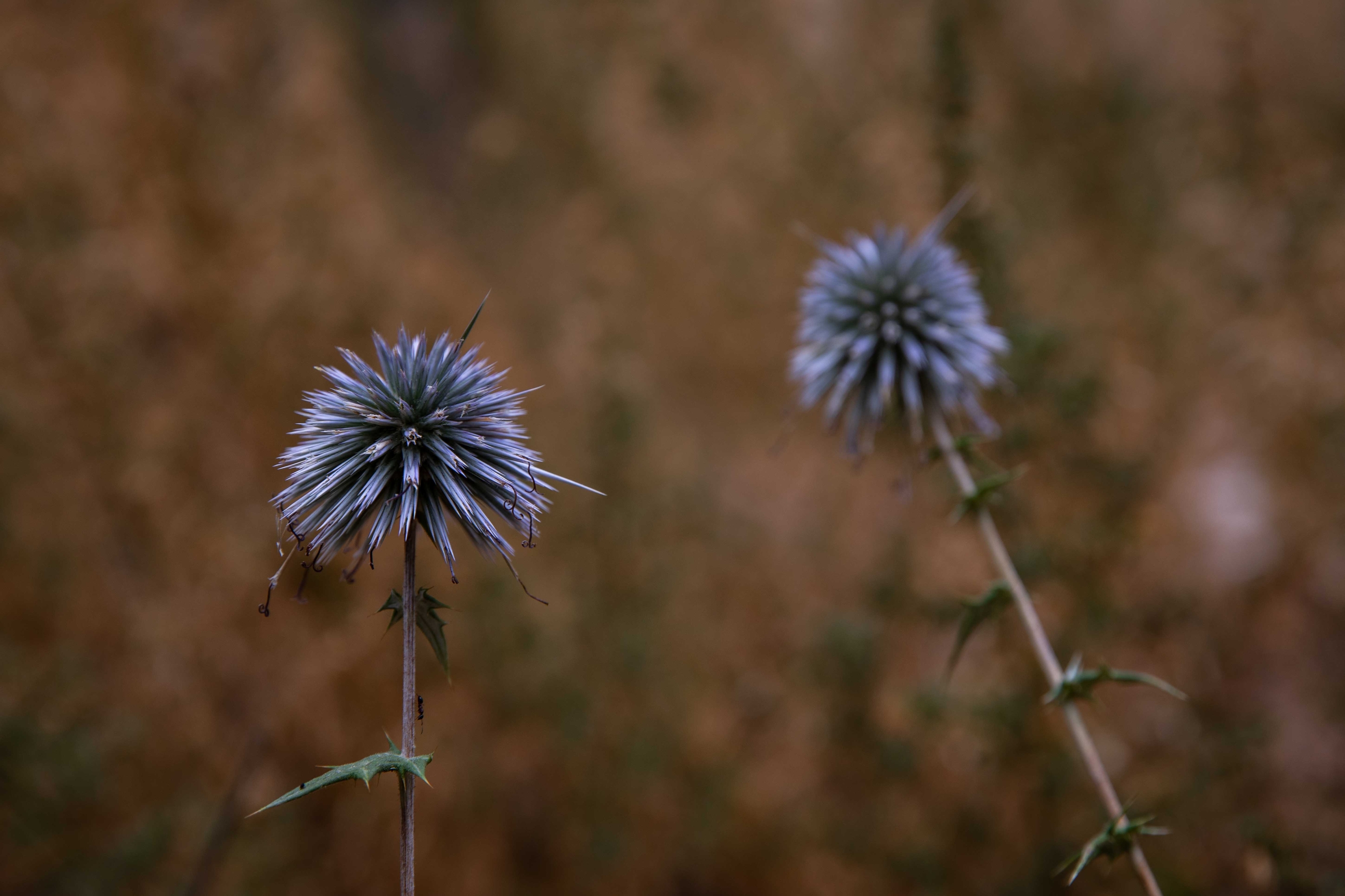
Echinops | قرقفان ازرق
Echinops or globe thistles are summer flowers recognizable by their purple-gray spiny foliage and their ability to withstand a variety of soil conditions. Different types of echinops have been found to have antimicrobial, antioxidant, and antidiabetic properties. Forager Rianna Tassabehji says the flowers can be used as a cancer treatment and as an abortion herb. Batloun, Lebanon. September 14, 2022. (Chris Trinh/The Public Source)
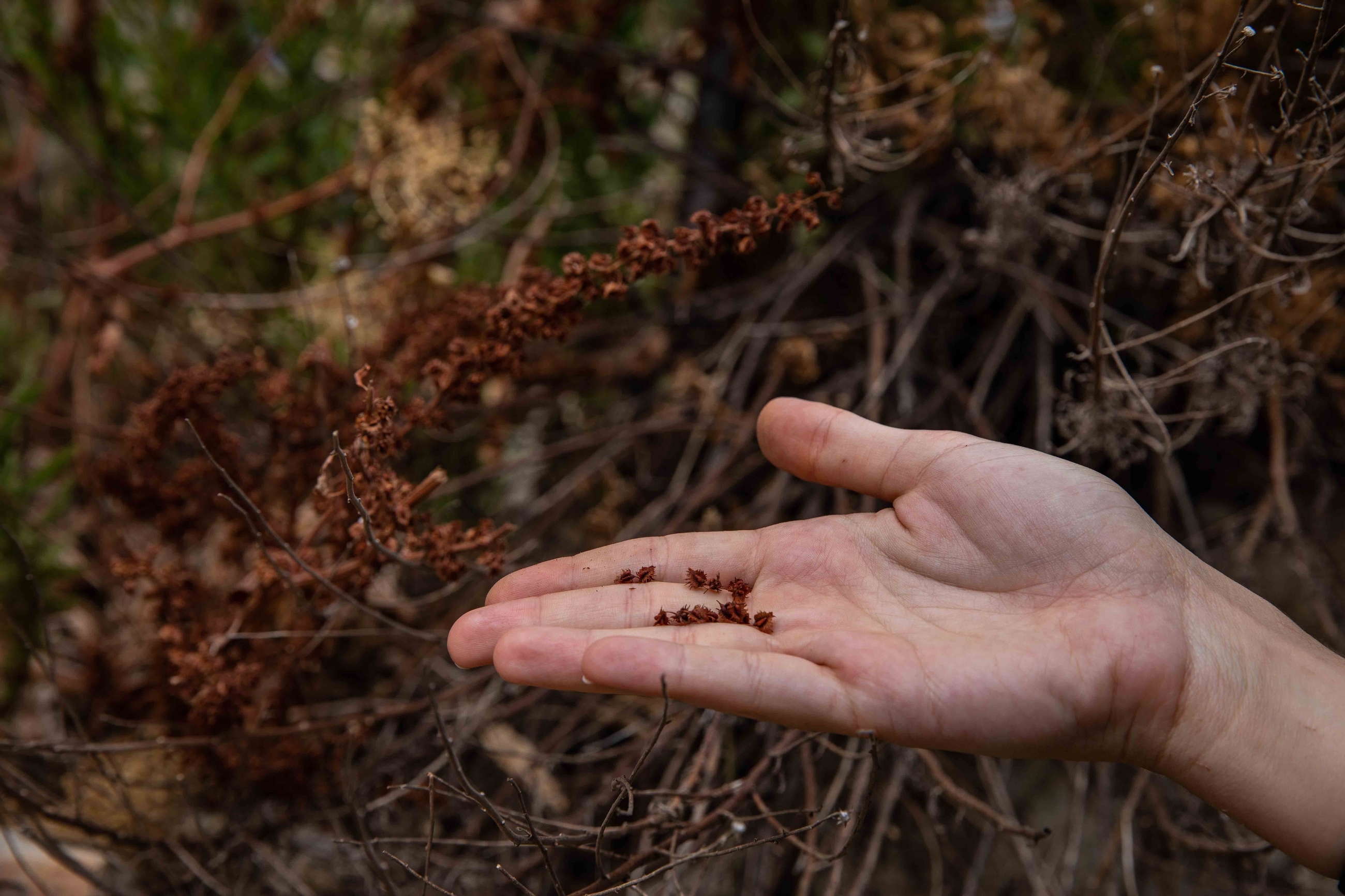
Dock seeds | بذور الحميضة
Forager Rianna Tassabehji collects dock seeds as she walks a pastoralist trail in Batloun, Chouf. She says every part of the dock plant is nutritiously or medicinally helpful: the leaves are good for liver health; the seeds can be ground and sifted (or roasted first) into flour; the roots, though difficult to harvest, detox the liver. Batloun, Lebanon. September 14, 2022. (Chris Trinh/The Public Source)
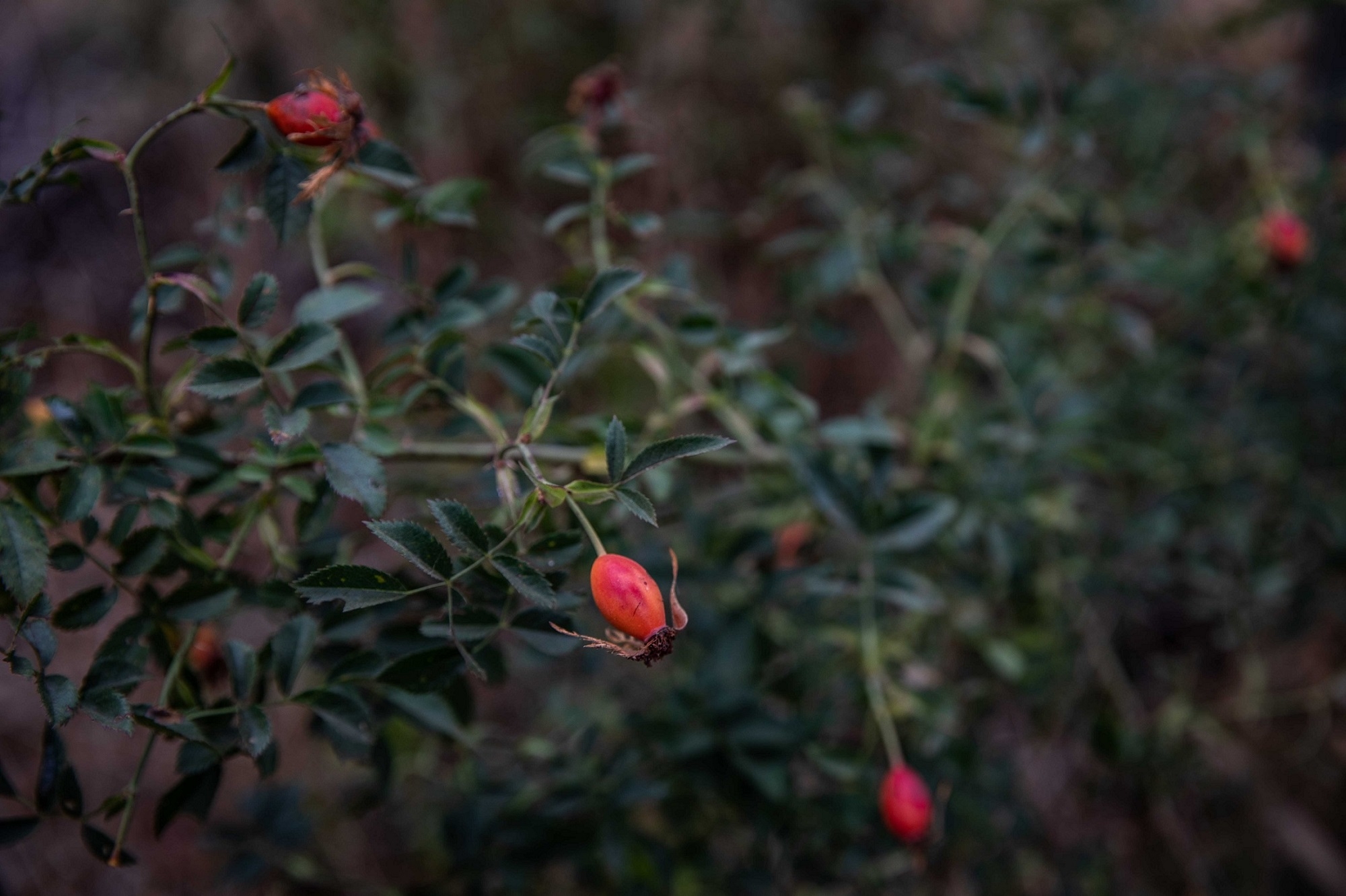
Rosehip | ثمر الورد
The fruit from the rose — the red-orange rosehip — can be made into jam or herbal tea. Rosehips are best harvested when soft and ripe, at which point they can be cut in half easily. Once halved, it’s important to remove the seeds and hairs; the seeds can be used to make rosehip seed oil, but the hairs should be discarded as they can irritate the digestive tract, including the throat, and the skin.
To make into tea: set the halved and cleaned rosehip buds outside in the sun for 1-2 days. If they cannot be put outside, dry them indoors for about a month. When dry, store them in jars. For a cup of tea, steep dry rosehips in hot water.
To make into jam: place the rosehips in a pot, cover them with double the amount of water, and let them cook until they are soft and mushy. Blend.
Batloun, Lebanon. September 14, 2022. (Chris Trinh/The Public Source)